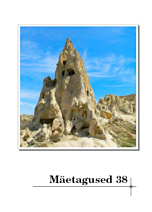Pronkssõduri sammude vaibuvas kajas. Siberist remigreerunud eestlaste kohanemisest Eestis: keel, stereotüübid, elulugu
With the Fading Echo of Bronze Soldier’s Footsteps. Estonian Repatriates in Siberia and Their Adaptation in Estonia: Language, Stereotypes, Biography
Author(s): Aivar JürgensonSubject(s): Customs / Folklore
Published by: Eesti Kirjandusmuuseum
Keywords: Bronze Soldier memorial; Estonians in Siberia; migration; stereotypes; identity; adaptation
Summary/Abstract: The article discusses the adaptation process of repatriates, the practical value of ethnic stereotyping and its relation with everyday communication. The paper seeks to answer the question to which extent is the stereotyping process related with biography and the actualisation of stereotypes in specific situations? The analysis is based on interviews with two Estonian repatriates from Siberia following the public unrest related to the relocation of the bronze statue of a Soviet soldier in Tallinn in April 2007. The author concludes that reciprocal ethnic stereotypes are directly linked to biographical situations, and also to the idea that ethnic stereotypes might be of huge importance in the orientation and identification of a person in a specific biographical situation, while being quite marginal or non-existent in another. Stereotypes are never isolated and are closely related to other cognitive schemes, while shaping people’s attitudes and behaviour. In recent years several studies on the Russian population’s loyalty to Estonia, their willingness to learn the official language, adjust themselves to the cultural and political values in Estonia, and apply for Estonian citizenship have been undertaken. While learning about the population’s orientation, individual self-identification conditioned by a specific biographical situation has to be seriously considered. The author claims that the use of ethnological methods (dense description, in-depth interviews) may contribute greatly to the study of national stereotypes and, in turn, to the study of national conflicts and xenophobia.
Journal: Mäetagused. Hüperajakiri
- Issue Year: 2008
- Issue No: 38
- Page Range: 75-100
- Page Count: 26
- Language: Estonian

